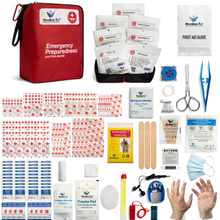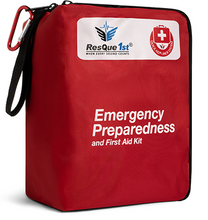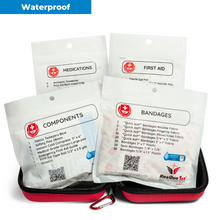
Medical knowledge changes over time. Commonplace first aid tactics from your mother or grandmother's day can quickly become outdated. Unfortunately, this leads many people to make mistakes in emergency situations.
Here are six of the biggest first aid mistakes that people still make today. Do you know fact from fiction?
The Six Most Common First Aid Mistakes
- Putting Butter on a Burn: Did your mother ever tell you to put butter over a kitchen burn? It turns out this trick can actually impede healing. A burn is more likely to become infected if there's a layer of grease on top of it. Next time, skip the butter and reach for cool (not ice-cold) water. Seek medical attention if the burn damages several layers of skin or covers a large area.
- Leaning Back with a Bloody Nose: It's almost instinctive: your nose starts to bleed, so you pinch it and lean back. Unfortunately, this response can cause blood to flow down your throat, triggering irritation, coughing, and difficulty breathing. It also makes it easy to swallow blood, which may lead to vomiting. Instead, lean forward and pinch your nose just below the bridge.
- Using Heat to Treat Frostbite: Minor cases of frostbite can be treated at home, but be careful not to treat too quickly. Using water over 108 degrees, sitting close to a fire or heater, or using a heating pad on high can all cause further damage to your skin. Instead, think low and slow. Get out of the cold, use lukewarm water (between 100 and 105 degrees) or a heating pad on low to gently warm your skin.
- Creating a Tourniquet: They do it all the time on TV. Someone gets a cut on an arm or leg, and their friend creates a tourniquet to stop the bleeding. In real life this is a recipe for permanent damage or even amputation. Instead, use a clean cloth to apply pressure to the wound. Don't hesitate to call 911 if the bleeding is dangerously heavy.
- Using Ipecac Syrup After Ingesting Poison: It may seems counter-intuitive, but unless you've been instructed to do so by a poison control expert, don't do anything to induce vomiting. If you do, the toxic or caustic substance could do more damage on its way back up. Instead, look for symptoms. If there aren't any, call the poison control center at 800-222-1222 for advice. If the person is having difficulty breathing, is drowsy or agitated, or is having a seizure, call 911 right away.
- Putting Heat on a Sprained Ankle: When it comes to sprains, think cold, not hot. Applying heat to a pulled muscle can cause blood vessels to dilate. This allows more blood into the area, which can increase swelling. Instead, keep the area immobilized and apply a cold compress for 20 minutes on, 20 minutes off.









